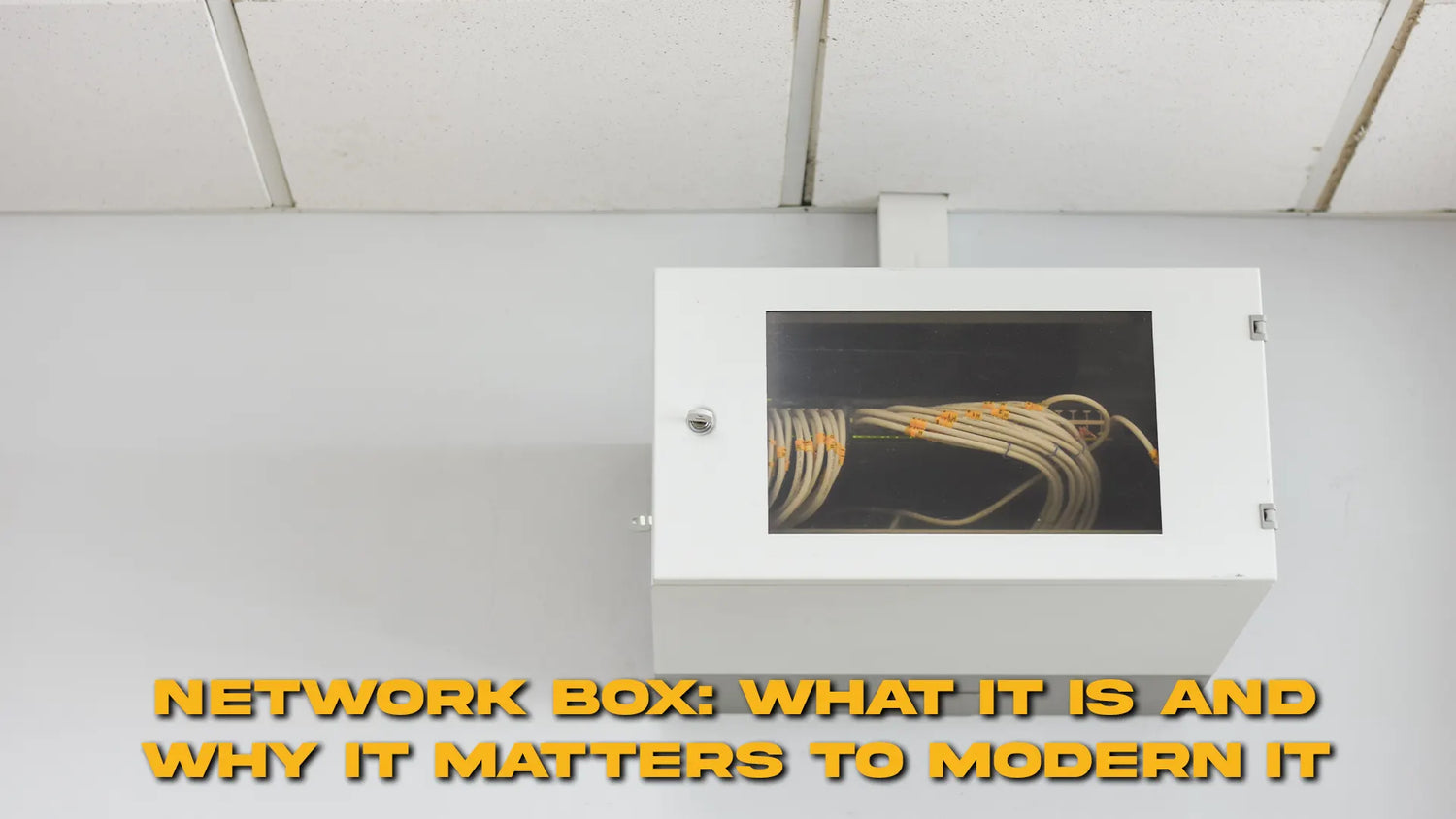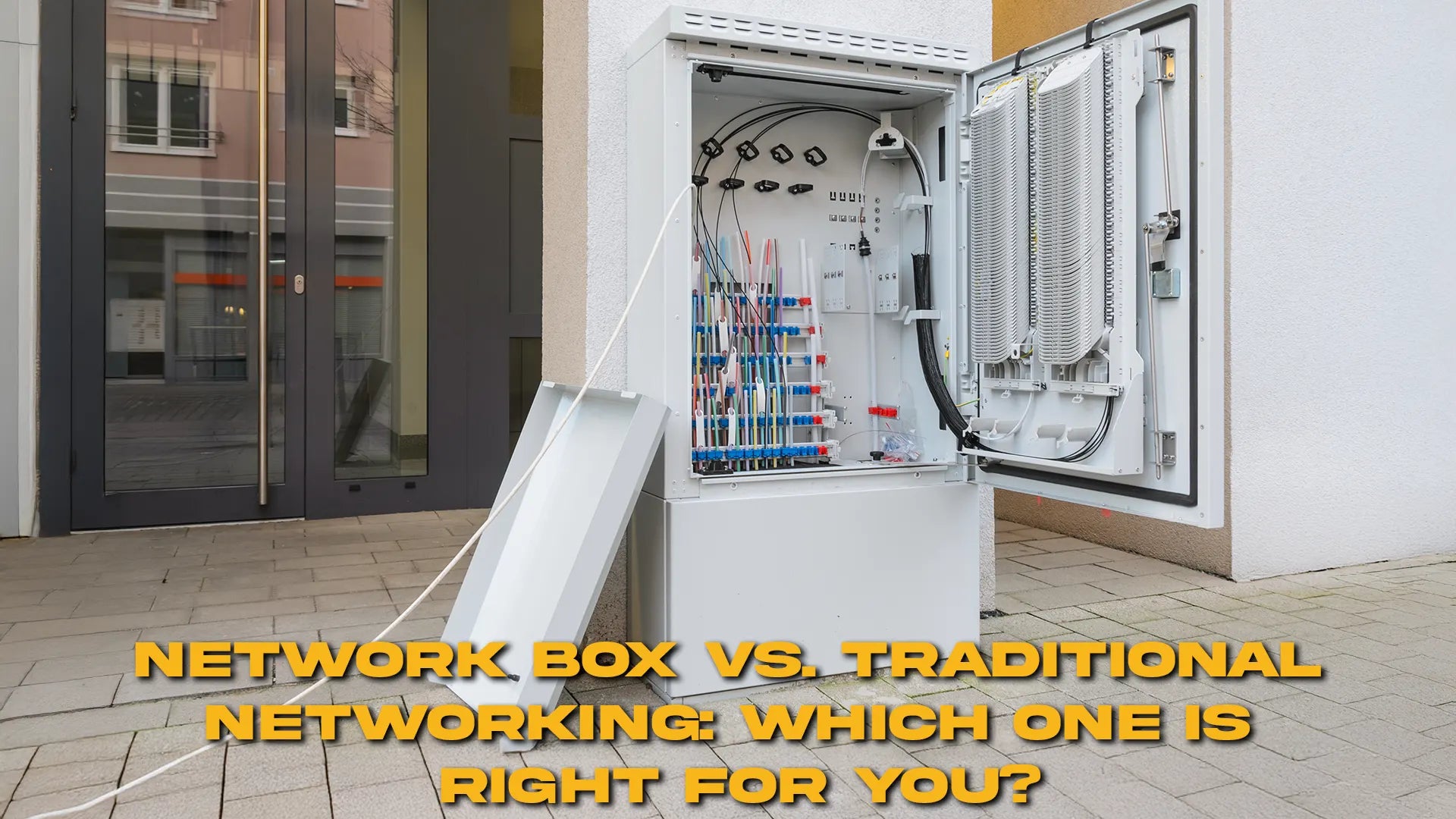Effective management of today's IT infrastructure in the fast moving digital world has never been more important than it is today. Network box is now a critical component for IT professionals, streamlining complex network functions and enhancing system performance overall. But what is network box and why is it so important in today's IT infrastructures? This paper delves in depth into the definition of the network box, where it belongs in contemporary IT solutions, and how it completely transforms network monitoring and management.
Understanding Integrated Network Solutions: Definition and Basic Functions
Essentially, an integrated network solution can be either hardware or software based, designed specifically to simplify and unify network monitoring, management, and troubleshooting. Unlike stand alone tools that function independently, this type of system brings multiple network management capabilities together on a single platform. With such integration, IT staff can monitor performance, detect anomalies, and address issues through one centralized console. Deployed as either an appliance or a virtual device, it acts as the nerve center for managing IT infrastructure efficiently.
One of the greatest advantages of this approach lies in its flexibility. It supports a wide range of functions, such as traffic monitoring, security surveillance, and self servicing alerts. By consolidating these features into a single unit, it simplifies the complexity of overseeing large scale networks. Its multitasking capabilities help reduce the operational load on IT teams, allowing them to concentrate on strategic initiatives rather than constantly addressing isolated technical problems.

Notably, these integrated solutions often support open source network monitoring tool integration, making them both cost effective and highly adaptable for organizations of any size. This compatibility not only provides deeper insights into network activity but also encourages innovation through community driven enhancements. With open source support, such systems become more scalable and responsive to evolving IT demands.
Why Network Box Matters in Modern IT Solutions
Modern IT systems are designed with flexibility, scalability, and real time responsiveness in mind. As IT infrastructures become more complex—encompassing on premise environments, cloud based networking, and hybrid ecosystems—traditional monitoring solutions fall short. To meet this challenge, organizations require tools that offer end to end visibility and control across all layers of the network, which is essential for ensuring high availability and optimal performance.
A critical element of effective network monitoring is the ability to compile data from multiple sources. IT environments typically include routers, switches, firewalls, and cloud services, each producing large volumes of data. Advanced solutions aggregate this information and apply sophisticated analytics to deliver actionable insights. This allows IT teams to detect potential bottlenecks and security vulnerabilities before they escalate into major issues.

Moreover, modern monitoring tools support automation and orchestration, both of which are fundamental to contemporary IT operations. Automated remediation processes and alert systems significantly reduce the time required to identify and resolve network issues, enhancing operational efficiency. This capability is especially important as businesses increasingly rely on cloud infrastructure and distributed systems, where manual interventions can be slow and error prone.
The Role of Network Monitoring Tools within a Network System
A key component of any modern network system is integrating advanced network monitoring capabilities. Such tools collect, analyze, and visualize network traffic data, enabling IT professionals to monitor network performance and health in real time. The combination of the system and its monitoring counterparts makes network management a comprehensive process that improves operational reliability and ensures security.
Network monitoring tools gather detailed metrics on bandwidth usage, latency, and error rates using SNMP (Simple Network Management Protocol) and NetFlow protocols. These subtle details make a significant difference in maintaining optimal network performance and meeting SLAs. Custom and detailed dashboards and reporting functionalities allow IT teams to track performance trends and quickly identify areas of concern.
Hence, monitoring tools also serve to troubleshoot networks. When a hiccup occurs, the system’s fault finding capabilities help minimize downtime and the impact caused by such issues. Visualization of the network topology, coupled with the option to zoom into specific device metrics, further enhances problem solving efficiency.
Complementing IT Infrastructure with Centralized Network Management
Modern IT infrastructure needs to be agile, reliable, and secure. With these requirements in mind, centralized network management systems serve as a vital component for organizing and controlling complex network ecosystems. These systems integrate seamlessly with existing hardware and software, creating a unified platform that enhances operational transparency and control.

The presence or absence of a centralized network management layer significantly impacts how IT infrastructure supports on premises, cloud, or hybrid environments. As businesses begin migrating their critical workloads to the cloud, maintaining visibility across hybrid architectures becomes essential. This ensures consistent security policies and enables data optimization between data centers and cloud providers.
Moreover, centralized network solutions help optimize resource allocation and reduce operational costs. They deliver actionable analytics that inform usage reports, enabling IT managers to make data driven decisions for capacity planning and network enhancements. This approach prevents over provisioning and ensures that infrastructure can efficiently handle peak demand—contributing to more sustainable and responsible IT operations.
The Impact of Cloud Networking on Network Box Evolution
Cloud networking has changed how organizations build and manage their networks. The elastic, scalable environment of clouds necessitates sophisticated tools to effectively monitor and control them. The network box has evolved to meet such needs by incorporating features specifically tailored to solve cloud networking problems.
An example of such a feature is the capability to monitor cloud traffic as well as traditional network traffic, all in a single view regardless of source. This is imperative because cloud applications tend to depend on a number of distributed services, and it becomes hard to identify problems without centralized visibility. The network box makes this easier by correlating cloud and on premise data, allowing for end to end performance management.
In addition, as cloud environments generally require on the fly scaling and ongoing configuration tweaks, the network box facilitates automation and API integrations. These allow IT administrators to change network policies automatically and quickly as well as monitor changes in real time, thus providing perpetual network reliability. The result is a resilient infrastructure that facilitates innovation and business agility within today's cloud centric environment.
How Smart Network Tools Make Troubleshooting Easier
One of the most challenging aspects of keeping up with today's IT infrastructure is effective network troubleshooting. When networks break down, downtime is costly and impacts business continuity. Advanced diagnostic tools help offset this with rich capabilities that make problem detection and resolution easier.
These tools collect detailed logs, metrics, and alerts to offer IT personnel immediate visibility into the cause of the network problem. By consolidating data from a variety of devices and network segments, they present a contextual view that helps identify issues like packet loss, abrupt latency spikes, or hardware failure. All this information is aggregated to reduce manual data retrieval and accelerate problem solving.
In addition, some of these solutions feature analytics and predictive maintenance powered by AI. Such advanced tools can anticipate possible network failures based on historical patterns, enabling proactive action before users are affected. With this capability, reactive repair is minimized and proactive management is promoted, significantly enhancing network stability and user satisfaction.
Network Box and Its Role in Improving Network Performance
Deep visibility into traffic patterns, bandwidth utilization, and application performance allows organizations to ensure their networks operate efficiently and meet the ever growing demands of digital transformation.
With accurate and timely data, IT teams can isolate congestion points, detect bandwidth misuse, and identify routing inefficiencies that reduce network speed. Understanding the sources of speed loss or fluctuation enables them to implement policies that prioritize critical traffic and upgrade necessary infrastructure. This level of control not only enhances the user experience but also ensures that business critical applications remain reliable.
Beyond performance monitoring using predefined thresholds and alerts, intelligent monitoring systems can notify IT staff when performance falls below acceptable standards. This enables swift corrective action and helps maintain consistent service quality while reducing the risk of extended outages or slowdowns.
Why Every Modern IT Environment Needs a Network Box
Historically, dedicated network appliances played a critical role in earlier IT solutions. Today, their ability to aggregate various network management tools, leverage open source network monitoring software, and integrate seamlessly with both on premise and cloud environments is essential for managing complex IT infrastructures. By accelerating network troubleshooting and performance optimization, these solutions empower organizations to remain agile, secure, and highly efficient.
Investing in robust, unified networking solutions is more than a simple upgrade—especially as cloud environments grow more complex. It becomes a strategic decision to strengthen visibility, enhance control, and ensure responsive network operations. Such infrastructure forms the backbone for organizations of all sizes to navigate modern cloud challenges and confidently scale for future growth.




Leave a comment
This site is protected by hCaptcha and the hCaptcha Privacy Policy and Terms of Service apply.